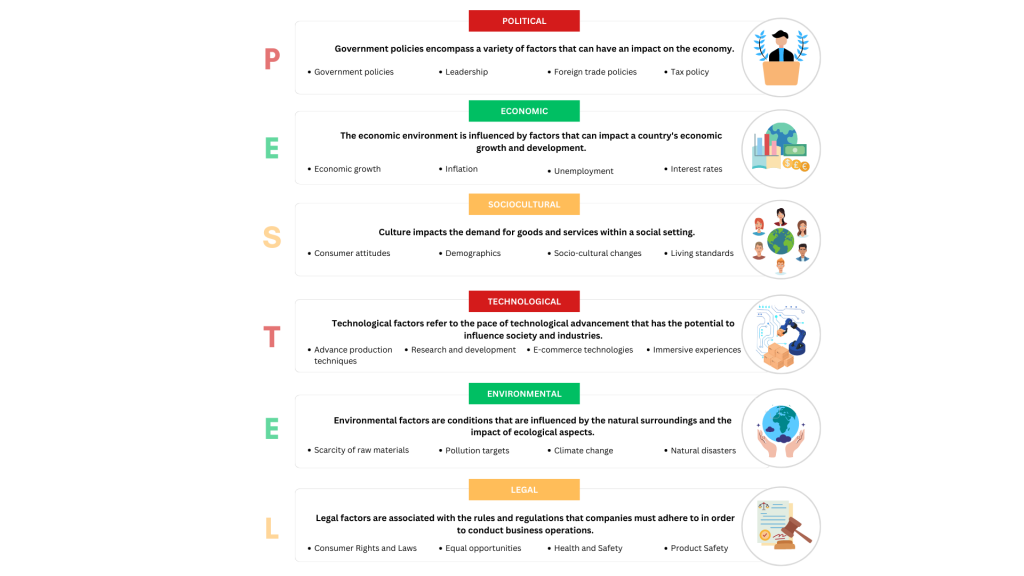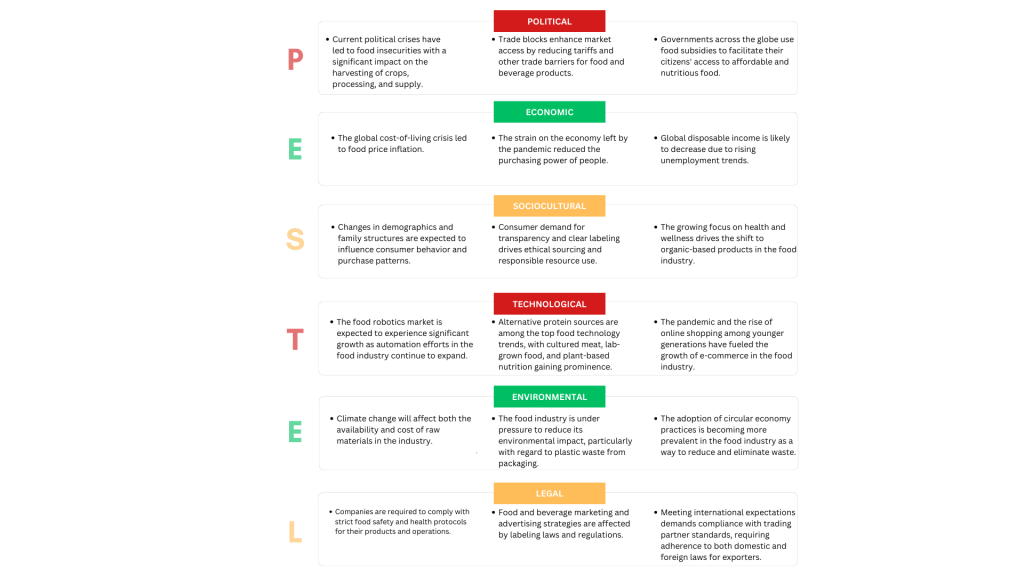How PESTEL analysis helps businesses adapt to change
Survival in today’s constantly shifting business world depends on a company’s ability to anticipate and adapt to external factors. One way to do so is by using the PESTEL analysis—a framework used to identify and monitor the macro-environmental factors impacting an organization. By analyzing these factors, companies can gain insights into existing opportunities and threats and use these insights to formulate their strategy to better align with the external environment.
Recent global events have significantly impacted companies worldwide. Russia’s invasion of Ukraine led to worldwide food shortages, supply chain disruptions, and an energy crisis in Europe. The ongoing disruption in the supply chain coupled with geopolitical tensions have led to concerns about an upcoming recession, as evidenced by slow growth in the global GDP.
Persistent high energy prices have also contributed to inflation, which has resulted in central banks raising interest rates and causing currency devaluation worldwide.
The prolonged COVID-19 lockdown in China also caused a severe strain on the global economy due to China’s prevalence as a global supplier. Moreover, tensions between the US and China continue to add uncertainty.
Another external factor is climate change, which is posing new threats to businesses. Thus, regulations for climate protection are becoming increasingly stringent.
Meanwhile, technology is becoming increasingly integrated into a wider number of industries, leading to increased digital transformation around the world.
In the face of these fast-paced and unpredictable external conditions, the PESTEL analysis is now more valuable than ever for businesses to navigate the challenges that arise.
The PESTEL analysis is a simple framework that encourages businesses to consider the external environment in which they operate, prompting them to consider external factors that affect their operations and evaluate their potential impact. Furthermore, it provides valuable insights for decision-making, empowering organizations to make informed choices and adjust their strategies to better match the broader external landscape.
To sum it up, the PESTEL analysis enables businesses to foresee potential threats and proactively mitigate their impact while spotting emerging opportunities and capitalizing on them.
Mapping the food industry’s PESTEL landscape
The food industry is a complex network of businesses engaged in the production, processing, packaging, distribution, marketing, and selling of food and beverages.
Given their crucial role in feeding the world’s population, food businesses must ensure they are prepared to handle any external factors that may impact their operations. To illustrate briefly, a PESTEL analysis for the food industry may cover several factors (See Figure 2).
The aforementioned recent global events have led to reduced purchasing power and food price inflation. Sociocultural changes and a growing focus on wellness are also expected to shape the industry’s future. Moreover, technological advancements and environmental efforts are significant factors that will influence its outlook. Hence, conducting regular PESTEL analysis is vital for companies in the food industry to be future-ready.
Ultimately, the PESTEL analysis is an indispensable tool for businesses, regardless of industry. Current global developments have demonstrated the importance of monitoring macro-environmental factors. Companies that prioritize PESTEL analysis are more likely to thrive in the face of external challenges and emerging trends, and it is high time that all businesses recognize its value and incorporate it into their strategy formulation.

Tags: food industry, macroenvironment, micro-environment, PESTEL








